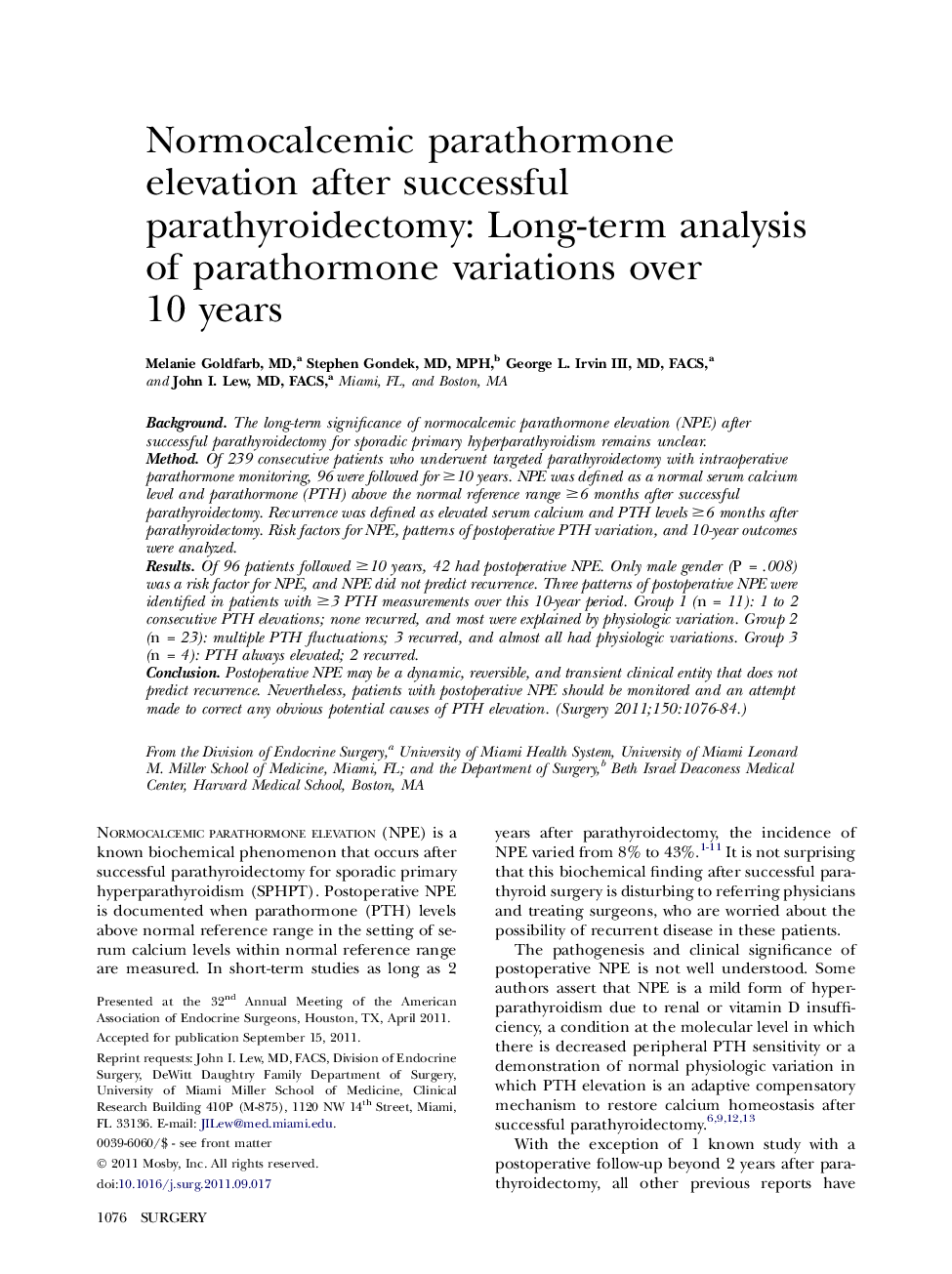| Article ID | Journal | Published Year | Pages | File Type |
|---|---|---|---|---|
| 4308387 | Surgery | 2011 | 9 Pages |
BackgroundThe long-term significance of normocalcemic parathormone elevation (NPE) after successful parathyroidectomy for sporadic primary hyperparathyroidism remains unclear.MethodOf 239 consecutive patients who underwent targeted parathyroidectomy with intraoperative parathormone monitoring, 96 were followed for ≥10 years. NPE was defined as a normal serum calcium level and parathormone (PTH) above the normal reference range ≥6 months after successful parathyroidectomy. Recurrence was defined as elevated serum calcium and PTH levels ≥6 months after parathyroidectomy. Risk factors for NPE, patterns of postoperative PTH variation, and 10-year outcomes were analyzed.ResultsOf 96 patients followed ≥10 years, 42 had postoperative NPE. Only male gender (P = .008) was a risk factor for NPE, and NPE did not predict recurrence. Three patterns of postoperative NPE were identified in patients with ≥3 PTH measurements over this 10-year period. Group 1 (n = 11): 1 to 2 consecutive PTH elevations; none recurred, and most were explained by physiologic variation. Group 2 (n = 23): multiple PTH fluctuations; 3 recurred, and almost all had physiologic variations. Group 3 (n = 4): PTH always elevated; 2 recurred.ConclusionPostoperative NPE may be a dynamic, reversible, and transient clinical entity that does not predict recurrence. Nevertheless, patients with postoperative NPE should be monitored and an attempt made to correct any obvious potential causes of PTH elevation.
